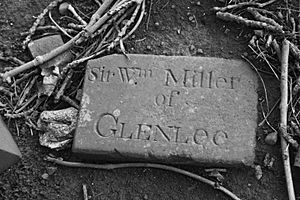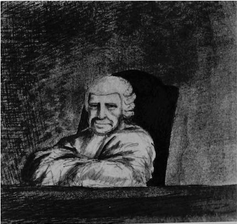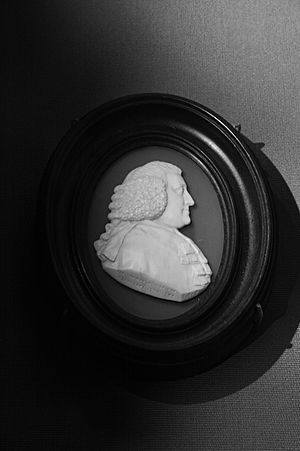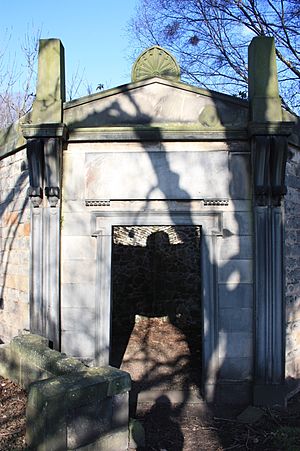William Miller, Lord Glenlee facts for kids
Sir William Miller, 2nd Baronet, Lord Glenlee (1755–1846) was an important Scottish lawyer, judge, and landowner. He was also a Fellow of the Royal Society of Edinburgh (FRSE) and the Society of Scottish Antiquaries (FSSA).
Contents
A Life in Law and Public Service
Sir William Miller was born on August 12, 1755. He was the only son of Sir Thomas Miller, who was also known as Lord Glenlee. His mother was Margaret Murdoch.
Early Education and Legal Career
William went to the High School in Edinburgh. After that, he studied law at the University of Edinburgh. In 1777, he became a lawyer, which is called an advocate in Scotland. This meant he could argue cases in court.
Serving in Parliament and as a Judge
For a short time, from 1780 to 1781, William was a Member of Parliament for Edinburgh. This means he helped make laws for the country. He later became a high-ranking legal official called the Clerk of the Justiciary in 1783.
In 1781, he was one of the first members of the Society of Scottish Antiquaries. This group studied old things and history in Scotland.
Founding the Royal Society of Edinburgh
In 1783, he helped start the Royal Society of Edinburgh. This is a famous group that supports science and learning. He was even a Vice President of the Society for many years, from 1816 until he passed away in 1846.
When his father died in 1789, William inherited the title of Baronet. In 1795, he became a judge in a high court called the College of Justice. He took on the special title "Lord Glenlee," just like his father had.
Where He Lived and His Final Resting Place
In Edinburgh, his home was at 17 Browns Square. He retired from his work in 1840. Sir William Miller passed away on May 9, 1846, at his country home called Barskimming in Ayrshire. He is buried in a special family tomb in the New Calton Burial Ground in Edinburgh.
Notable Legal Work
Even at a young age, William Miller was involved in important legal matters.
Early Court Cases
When he was only 19, Miller played a part in a court case involving a man named John Reid. This case also involved the famous writer James Boswell. The case was eventually settled by William's uncle, Patrick Miller, who was also a judge.
In 1781, he also spoke in support of Sir Hugh Palliser for a job at Greenwich Hospital.
His Family Life
In 1777, William Miller married his cousin, Grizel Chalmers. Her father, George Chalmers, was a rich merchant who traded grain. Grizel was also known for her beautiful singing at the Edinburgh Music Society.
They had nine children together: five sons and four daughters. Six of their children lived to adulthood: three sons and three daughters. Some of their children included Grizel Martha, Martha Miller, John Miller, and Thomas Miller.
William's uncle was Patrick Miller of Dalswinton. Sadly, his second son, Lieutenant Colonel William Miller, died fighting in the Battle of Waterloo. He is buried near Brussels, but his name is also remembered in the family tomb in Edinburgh.
How He Was Remembered in Art
Many artists created pictures of Sir William Miller.
Portraits and Caricatures
A portrait of him by William Walker can be seen at the Scottish National Portrait Gallery. A caricature (a drawing that exaggerates features for humor) of him was made by John Kay in 1799. He was also sketched by Robert Scott Moncrieff around 1820.





